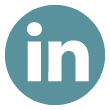How to Transition Back to the Workforce
Going back to work after a long absence can be filled with unknowns. What will employers think about the time lapse on my resume? Will my absence from the workforce hurt my chances for employment? Do I need to learn new skills to be employable?
Transitioning back to the workforce can be challenging regardless of the reasons for the absence, i.e., starting a family, caring for a sick loved one, your own illness, volunteering, pursuing a graduate degree. You may face recruiters and employers who have a bias against gaps in employment history or even your own fears and self-doubts about returning. Having worked with many people who have made a successful transition, we urge you to take a breath, focus, and follow the tips below to help you overcome the challenges.
7 Tips for a Smoother Workforce Re-Entry
1. Focus Your Search
Don’t just apply to any open position. If you want to increase your chances of landing a job, you need to narrow your search. Before you start sending out resumes, consider your:
- Needs
- Interests
- Goals
- Education
- Experience
- Skills
Chances are your priorities and qualification matches may have changed since your last employment. Do some research and identify the types of positions that not only fit your credentials, but which you will also enjoy. You may find that your ideal jobs are seeking skills that you don’t have. Now is the time to try to boost your skill set. You can do this by taking online courses, volunteering, or even through an internship.
2. Update Your Resume
Rebooting your resume after a lapse in employment is a necessity. You’ll want to start by adding your last position, being sure to highlight your accomplishments. And of course, add any new skills you have acquired. If you have had a long absence, you may want to consider creating a hybrid resume. This is a format where you showcase your summary, skills, and accomplishments at the top of the page, followed by your work history and education. I recommend treating the gap in employment as if it were a job itself. Briefly explain the reason for your absence, such as you were a stay at home parent until your child was ready for preschool or you needed to care for a sick family member. Keep in mind that the real key to an effective resume is tailoring it to the position to which you are applying. You will want to create a resume for each application that highlights the specific qualifications and qualities the employer is looking for.
3. Polish Your LinkedIn Profile
Just as you reboot your resume, you’ll need to freshen up your LinkedIn profile. Start by updating all of the relevant information and uploading a new, professional headshot, as well as a cover image that conveys what you do. Then, take advantage of the available features to help your profile stand out, such as:
- Using the name pronunciation feature, which is available on the app, to record a 15 second statement about what you do. This shows up in the header via the sound icon.
- Making the most of your headline by going beyond your job title. Include information that showcases your personality, such as organizations with whom you volunteer.
- Taking advantage of the about section. You have 2,000 characters to give an overview of your professional life, achievements, volunteer work, and activities that give a glimpse into who you are.
4. Create a Cover Letter
A cover letter is your elevator pitch. It’s a great way to quickly showcase your qualifications and exactly what you can bring to the position. As with your resume, if you want to stand out, you should tailor each cover letter. Don’t simply restate your resume, but rather provide highlights. Explain why you want the job, why you’re a good fit, and the value you offer. Spend one to two sentences explaining the reasons for your lapse in work history, but don’t go too in-depth as you want the focus to remain on your qualifications and why you’re the right person for the job.
5. Build and Leverage a Network
A strong network can be extremely valuable in your job search. During your period of unemployment, you may have made new connections who could be instrumental in landing an interview. Connect with these people on LinkedIn. Previous connections are also valuable. Let them know that you are looking to transition back to the workforce and ask if they have any insight on how the industry has changed, new skills required, and what they think you should highlight on your resume. Once your network knows you are looking to make a re-entry, you never know what opportunities may come your way.
6. Strategize a Segue
If you don’t currently have the qualifications to transition back to a full-time position you desire, consider freelancing or contracting work. This type of position allows you to use the skills you have while acquiring new skills and bolstering your experience. Returnships are another option. A returnship is basically an internship that helps those who have left the workforce and are now wishing to re-enter it. Usually it provides extra training and affords valuable mentorships. The time of the returnship varies, but typically the returner is hired when it has ended. Many larger companies offer returnships programs and they are definitely worth researching. You could also consider volunteering at a non-profit to bolster your credentials.
7. Work with a Career Coach
If you’re feeling overwhelmed and don’t know where to start, a career coach can help guide you. At Monarch Consulting HR Solutions, we work with clients on all of the above steps so they can focus on a clear path forward. Connect with us if you would like assistance transitioning back to the workforce.
 En Español
En Español









